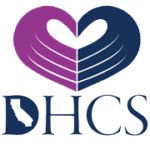Posttraumatic stress disorder (PTSD) is a severe mental health condition that can develop following exposure to a traumatic event, such as warfare, natural disasters, serious accidents, or personal assaults. It manifests through a spectrum of psychological symptoms that can have profound and extensive effects on an individual’s quality of life. Characteristic symptoms include flashbacks, nightmares, severe anxiety, and pervasive, uncontrollable thoughts about the traumatic event. While it’s common to experience some level of stress after trauma, PTSD is distinguished by prolonged and intense distress that persists long after the initial event.
The impact of PTSD extends beyond the individual sufferer, often touching the lives of friends, family, and communities. Individuals with PTSD may experience disruptions in their social and occupational functioning, struggling with relationships and difficulties in maintaining employment. This can lead to isolation and problems with self-esteem and self-worth. Moreover, PTSD frequently coexists with other mental health disorders, such as depression, anxiety, and substance abuse, compounding the challenges faced by those affected. The ripple effects of PTSD highlight the critical importance of timely diagnosis, comprehensive treatment, and informed support systems.
Understanding the symptoms, causes, and effects of PTSD is crucial for healthcare professionals, patients, and their loved ones to foster effective management of the disorder. Acknowledging the condition’s complex nature and wide-ranging consequences underscores the need for multi-faceted approaches to care. Through comprehensive treatment plans that may include therapy, medication, and support from loved ones, individuals living with PTSD can work toward reclaiming their well-being and quality of life.
Overview of PTSD
Post-traumatic stress disorder (PTSD) is a significant mental health condition with a well-documented history of affecting individuals following traumatic events. Its impact is observed across various populations, with established diagnostic criteria for effective identification and treatment.
Definition and Prevalence
PTSD is defined as a mental health condition that is triggered by experiencing or witnessing a traumatic event. Symptoms may encompass flashbacks, nightmares, severe anxiety, and uncontrollable thoughts about the event. The prevalence of PTSD varies, but estimates suggest a lifetime prevalence of approximately 6% in the U.S. adult population.
Diagnostic Criteria
The diagnosis of PTSD has evolved, with the most current criteria published in the Diagnostic and Statistical Manual of Mental Disorders, Fifth Edition (DSM-5). To be diagnosed with PTSD, an individual must exhibit symptoms from four distinct categories:
- Intrusive thoughts: such as recurrent distressing memories or dreams related to the traumatic events.
- Avoidance: efforts to avoid distressing memories, thoughts, or feelings closely associated with the traumatic event(s).
- Alterations in cognition and mood: which can include distorted beliefs about oneself or others and persistent negative emotional states.
- Alterations in arousal and reactivity: indicated by behaviors such as hypervigilance or an exaggerated startle response.
Individuals must experience these symptoms for more than one month, and the symptoms must cause significant distress or impairment in social, occupational, or other important areas of functioning. More detailed criteria can be found within the DSM-5 definition and criteria for PTSD.
PTSD Impact on Individuals
Post-Traumatic Stress Disorder (PTSD) takes a significant toll on individuals, affecting various facets of their health and well-being. Individuals may experience a range of physical and mental health consequences, as well as cognitive impairments due to the condition.
Physical Health Consequences
People with PTSD may experience chronic pain, cardiovascular issues, and a weakened immune response. According to research, there is a connection between PTSD and increased risk of heart disease. They often report unexplained physical symptoms such as headaches or stomach pain. The stress associated with PTSD can also exacerbate existing health conditions.
Mental Health Consequences
Mental health is particularly impacted by PTSD. Individuals may suffer from concurrent conditions such as depression, anxiety, and substance abuse disorders. The prevalence of suicidal behavior is notably higher among those with PTSD. Emotions like guilt, shame, and anger can be intense and overwhelming, affecting daily functioning and interpersonal relationships.
Cognitive Effects
Cognition can be impaired in various ways for individuals with PTSD. They often struggle with memory problems, attention deficits, and executive functioning. PTSD’s impact on cognitive abilities may manifest in difficulties concentrating, making decisions, and learning new information. This can be detrimental to their professional and personal lives.
PTSD in Different Populations
Posttraumatic Stress Disorder (PTSD) manifests uniquely across various populations. The prevalence, contributing factors, and impact of PTSD can vary significantly among military veterans, children and adolescents, and survivors of trauma.
Military Veterans
In military veterans, the incidence of PTSD is influenced by combat exposure and traumatic events during service. For instance, the National Center for PTSD reports a lifetime prevalence of PTSD of around 6% in the U.S. adult population, with higher rates in veterans. Support and treatment approaches for this group often involve a combination of therapy, medication, and social support.
Children and Adolescents
Children and adolescents experience PTSD differently than adults, often linked to abuse, domestic violence, or other severe stressors. Symptoms may include distressing dreams, intense distress at reminders of the trauma, or avoidance of reminders. Efforts to cater to their needs must be adapted to their developmental level and may involve family as part of the support system.
Survivors of Trauma
Survivors of various forms of trauma, such as natural disasters, violent crime, or severe accidents, experience PTSD in ways that relate to personal factors and the nature of the traumatic event. As noted by research published in PMC, PTSD criteria and diagnosis have evolved considerably, recognizing the wide spectrum of traumatic experiences that can affect individuals. Treatment and support mechanisms are tailored to the type and severity of trauma experienced.
Social and Relational Impact
Posttraumatic Stress Disorder (PTSD) significantly influences social interactions and relationships. It often leads to complex challenges in both personal and professional life.
Family Dynamics
In family settings, individuals with PTSD may experience heightened conflict and diminished satisfaction in relationships. The condition can strain partnerships, often due to symptoms such as mood swings and withdrawal. A comprehensive review highlights the disorder’s frequent link to relationship distress. Children and spouses may bear the emotional brunt as they navigate the unpredictable emotional landscape that comes with PTSD. The disorder’s presence challenges the conventional dynamics, demanding adaptability and increased understanding from family members.
Workplace Challenges
At work, PTSD can manifest in various ways, leading to reduced productivity and strained colleague relationships. Affected individuals may struggle with concentration, promptness, and task completion, which can, in turn, influence their professional standing and opportunities. The imperative for supportive structures in the workplace is underscored by studies revealing PTSD’s negative impact on social functioning in professional environments. Team cohesion and job satisfaction can decline when PTSD is not addressed, emphasizing the importance of appropriate workplace accommodations and resources.
Economic Burden of PTSD
Posttraumatic Stress Disorder (PTSD) imposes a significant financial strain on both individuals and society. This strain emerges predominantly through healthcare expenses and productivity loss, underpinning the far-reaching impact of PTSD on economic stability.
Healthcare Costs
Direct healthcare costs for PTSD are substantial and multifaceted. Treatment often involves a combination of psychotherapy and pharmacotherapy. A study quantifying these costs notes that individuals with PTSD may incur higher expenses due to the need for specialized psychological therapies and prescription medications. Long-term treatments, such as cognitive behavioral therapy or prolonged exposure therapy, contribute to the overall healthcare expenditure. Moreover, there are associated costs from potentially comorbid conditions, such as depression and anxiety, which are prevalent among those with PTSD.
- Total healthcare costs include:
- Inpatient services
- Outpatient services
- Prescription medications
- Ancillary services (e.g., therapy animals, alternative therapies)
The economic burden of PTSD in the United States includes not only the direct costs of medical care but also the indirect costs associated with these treatments.
Productivity Loss
Productivity loss attributed to PTSD manifests in various forms, including absenteeism, presenteeism (reduced productivity while at work), and loss of employment. It reflects the impact on an individual’s ability to maintain consistent and effective work performance.
- The consequences of productivity loss include:
- Absenteeism: Days off work due to PTSD-related issues.
- Presenteeism: Compromised work efficiency stemming from PTSD symptoms.
- Loss of employment: Long-term absence or inability to maintain a job.
The impact of PTSD on the economy highlights that the aggregate loss in productivity contributes significantly to the overall economic strain. This further emphasizes the importance of addressing PTSD with effectual treatment options to mitigate these losses.
Treatment and Management
Effective treatment of PTSD involves a multi-faceted approach tailored to the individual’s symptoms and needs. This section outlines the main strategies for managing PTSD, including therapeutic techniques, medications used, and holistic therapies.
Therapeutic Approaches
Various evidence-based psychotherapies are central to PTSD treatment. Cognitive Behavioral Therapy (CBT), specifically Prolonged Exposure (PE) therapy and Cognitive Processing Therapy (CPT), is widely recognized for its effectiveness. They help patients by teaching them to gradually approach trauma-related memories, feelings, and situations. Mayo Clinic provides an overview of these therapeutic strategies. Eye Movement Desensitization and Reprocessing (EMDR) therapy is another treatment modality, where patients process traumatic memories while focusing on a specific external stimulus.
Medications
Medications are often used in conjunction with psychotherapy to treat PTSD. Selective Serotonin Reuptake Inhibitors (SSRIs) like sertraline (Zoloft) and paroxetine (Paxil) are the first-line pharmaceutical treatments. Other options may include Selective Norepinephrine Reuptake Inhibitors (SNRIs) and anti-anxiety medications. It’s important to consult healthcare providers to determine the best course of action, as explained by the National Institute of Mental Health.
Holistic and Alternative Therapies
Complementary therapies can be valuable in a holistic treatment plan. Practices such as mindfulness, yoga, and acupuncture can aid in reducing symptoms of stress and anxiety. It’s vital patients speak with healthcare professionals before starting any holistic treatment. Discussion of these therapies and their support in symptom control can be found in literature such as the review by the Veterans Affairs.
Advancements in PTSD Research
Recent advancements in PTSD research are providing new insights into the disorder’s underlying mechanisms and are highlighting potential pathways for more effective treatments.
Neuroscientific Findings
Neuroscientific research into PTSD has uncovered significant changes in brain structure and function. Studies using MRI scans have shown that individuals with PTSD may experience a reduction in the volume of the hippocampus, a region related to memory processing. Furthermore, the emergence of neuroimaging techniques has been instrumental in visualizing and understanding the brain’s alteration in PTSD patients, potentially paving the way for new therapeutic targets.
Longitudinal Studies
Long-term research, or longitudinal studies, have been critical in understanding how PTSD symptoms evolve over time. These studies suggest that early intervention may play a key role in mitigating long-term psychological distress. By following individuals over months or years, researchers have been able to observe the progression of the disorder and the factors that may contribute to recovery or worsening symptoms.
Public Perception and Stigma
Public perception of Post-Traumatic Stress Disorder (PTSD) can greatly impact the lives of those suffering from the condition. Stigma surrounding PTSD often arises from misinformation and can impede individuals’ willingness to seek help.
Media Influence
Media portrayals often shape public opinions about PTSD, potentially leading to misunderstanding and stigmatization. Sensationalizing or depicting PTSD in a way that reinforces stereotypes can result in a misguided view among the public. Accurate representation is crucial, as it can influence both the perception of the disorder and the empathy towards individuals experiencing PTSD.
Stigma Reduction Efforts
Efforts to reduce stigma are essential for improving the lives of those with PTSD. Education and awareness campaigns have been effective tools for combating public stigma, emphasizing the need for compassion and support for affected individuals. Additionally, peer support and community-based interventions can promote early treatment and help to dismantle the barriers created by societal stigma.







